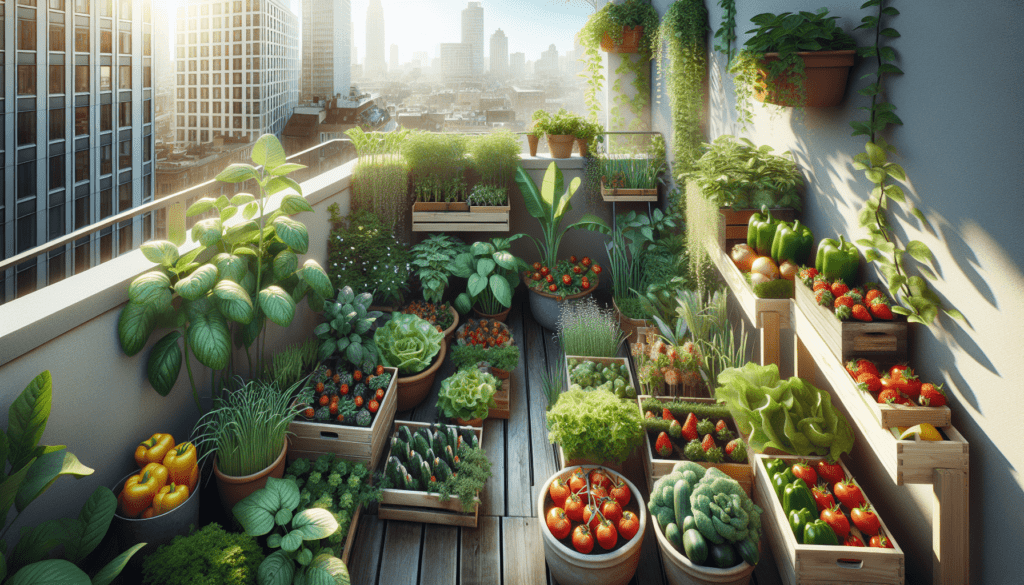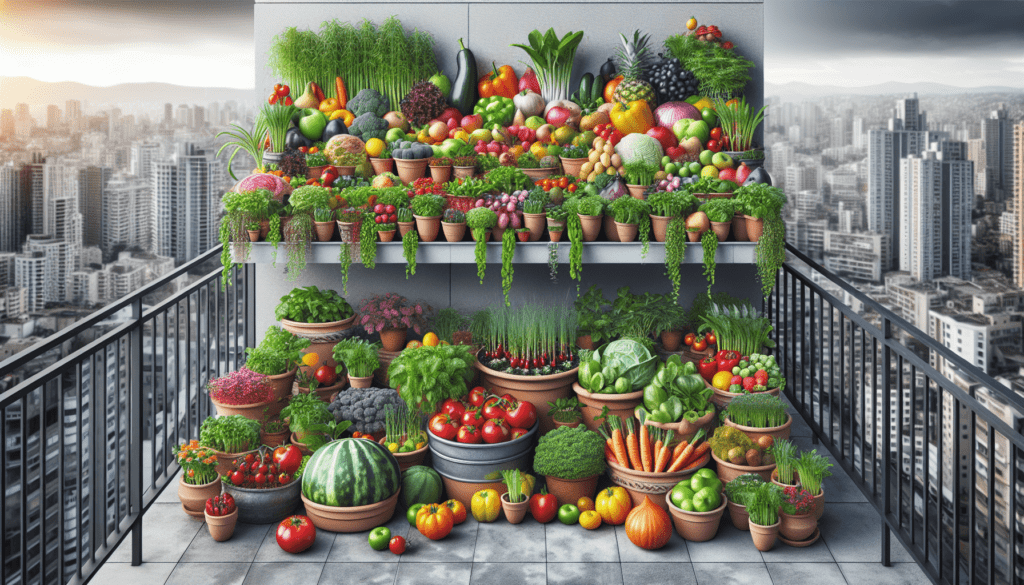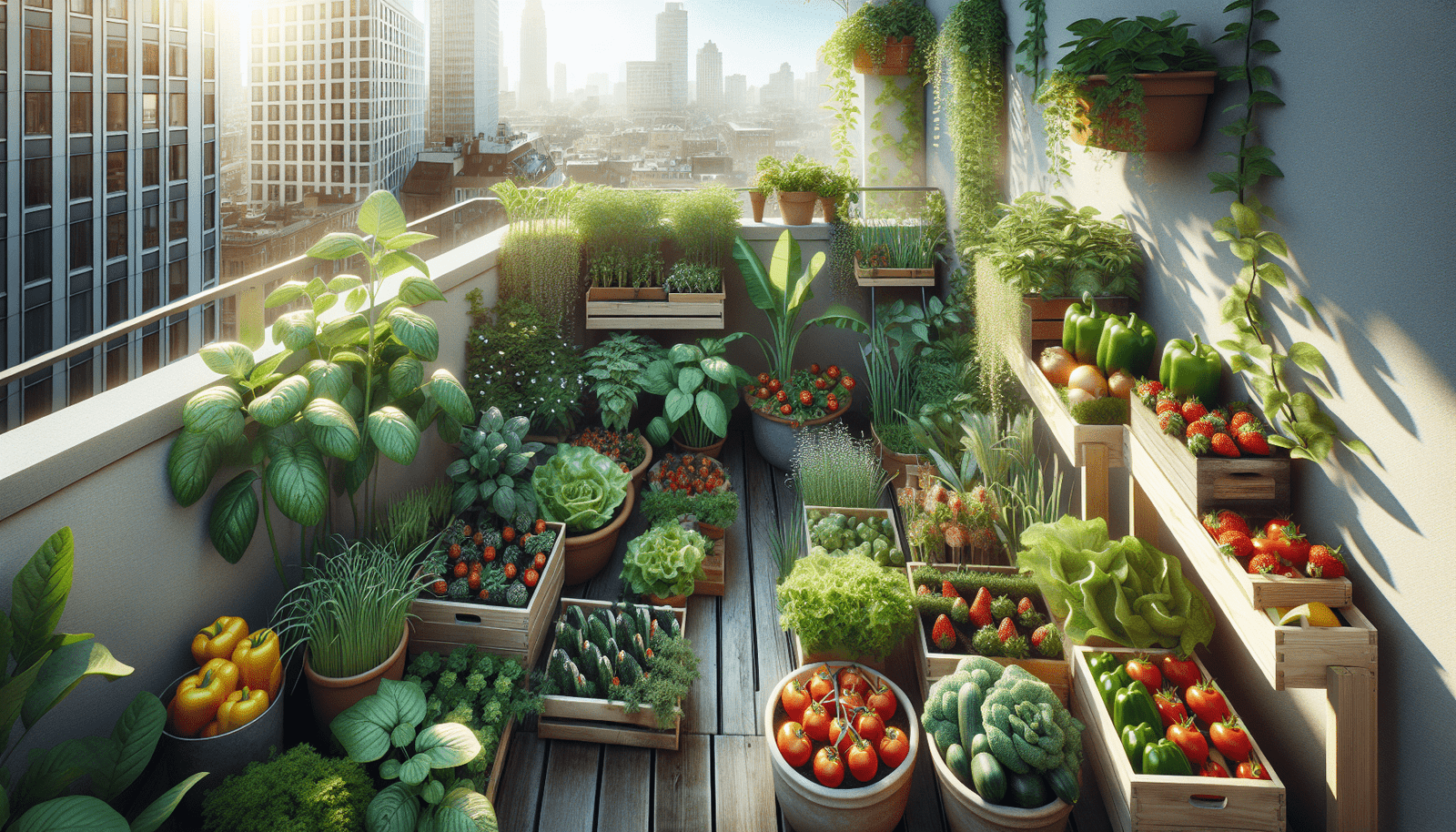Are you interested in growing your own fresh produce but don’t have access to a traditional garden space? Don’t worry, you can still cultivate a variety of fruits, vegetables, and herbs on your balcony! In this article, you will learn about the best practices for creating and maintaining a thriving balcony food garden. Let’s get started!
Choosing the Right Plants
When selecting plants for your balcony food garden, it’s essential to choose varieties that will thrive in containers and vertical spaces. Opt for compact and dwarf varieties of fruits and vegetables, such as cherry tomatoes, dwarf peppers, and compact herbs like basil and thyme. Additionally, consider the amount of sunlight your balcony receives and choose plants that are suited to those conditions.
Consider the size and shape of your containers
Using the right size and shape of containers is essential for the success of your balcony food garden. Make sure your plant containers have adequate drainage holes to prevent waterlogging and root rot. Additionally, consider the depth of the containers, as some plants require deeper root systems to thrive.
Soil and Fertilizer
Choosing the right soil and fertilizer is crucial for the health and productivity of your balcony food garden. Opt for a high-quality potting mix that is well-draining and nutrient-rich. Consider adding organic matter, such as compost or worm castings, to improve soil fertility. When it comes to fertilizing your plants, use a balanced organic fertilizer or create your own compost tea for a natural and sustainable option.
Mulching
Mulching is a great practice for retaining soil moisture, suppressing weeds, and regulating soil temperature. Consider using organic mulches like straw, shredded leaves, or compost to improve the overall health of your balcony food garden. Make sure to top up the mulch layer regularly to maintain its effectiveness.

Watering and Drainage
Proper watering and drainage are essential for the health and success of your balcony food garden. Be mindful of your plants’ water requirements and adjust your watering schedule based on factors like the weather, plant type, and container size. To prevent waterlogging, ensure that your containers have adequate drainage holes and use saucers to catch excess water.
Self-watering containers
Consider investing in self-watering containers for your balcony food garden. These containers feature a reservoir that allows plants to absorb water as needed, reducing the risk of over or under-watering. Self-watering containers are especially beneficial for busy individuals or those who may struggle to maintain a consistent watering schedule.
Sunlight Exposure
Most fruits, vegetables, and herbs require ample sunlight to thrive and produce a bountiful harvest. Determine the amount of sunlight your balcony receives throughout the day and choose plants that are suited to those conditions. Vegetables like tomatoes, peppers, and cucumbers typically require full sun, while herbs like mint and parsley can tolerate partial shade.
Rotate your plants
To ensure even sunlight exposure and promote healthy growth, consider rotating your plants regularly. This practice will help prevent uneven growth and potential sunburn on the leaves. Rotate your containers every few days to ensure all parts of the plant receive adequate sunlight.

Pest Management
Pests can be a common issue in balcony food gardens, but there are several natural and organic methods for managing them effectively. Inspect your plants regularly for signs of pests like aphids, caterpillars, or spider mites. Consider using natural repellents like neem oil, insecticidal soap, or homemade garlic spray to deter pests without harming beneficial insects.
Companion planting
Companion planting is a great way to naturally repel pests and improve the overall health of your balcony food garden. Integrate pest-repelling plants like marigolds, nasturtiums, or basil among your edible plants to deter pests and promote biodiversity. Research companion planting combinations that work well together and experiment with different arrangements in your garden.
Harvesting and Maintenance
Regular harvesting and maintenance are essential for the long-term success of your balcony food garden. Harvest fruits and vegetables when they are ripe to encourage continuous production, and prune herbs regularly to promote healthy growth. Additionally, remove dead or diseased plant material to prevent the spread of pests and diseases throughout your garden.
Maintenance schedule
Create a maintenance schedule for your balcony food garden to stay on top of tasks like watering, fertilizing, and pest management. Dedicate a specific time each week to tend to your plants, check for any signs of stress or disease, and make any necessary adjustments. Consistent and routine maintenance will ensure the health and productivity of your balcony food garden.
In conclusion, growing a balcony food garden is a rewarding and fulfilling experience that allows you to cultivate fresh, organic produce in a limited space. By following the best practices outlined in this article, you can create a thriving and bountiful garden that brings joy and nourishment to your home. Remember to choose the right plants, soil, and containers, prioritize proper watering and sunlight exposure, and implement effective pest management strategies for a successful balcony food garden. Happy gardening!

